What Are the Fastest Types of Sailboat (and Why)?
For most of us in our "normal" sailboats, we can get going "fast" on a good breezy day. Even a small day-sailer can give you a white-knuckled ride in the right conditions, and good racers in modest boats can put up double-digit speeds. Twelve knots can feel really fast when you're used to half that. But what does fast mean now, and what are the fastest types of sailboats? And what makes these speed demons fly?
The fastest types of sailboats are:
- Specialized performance boats: 65.45 knots
- Foiling multihulls: 44 knots
- Foiling monohulls: 50 knots
- Windsurfers & kiteboards: 50+ knots
- Racing skiffs:
- Performance multihulls: 20 knots
- Offshore racing monohulls: > 20 knots
As of this writing, the fastest sailboat in the world is a specialized boat called Vestas Sailrocket 2. In 2012 she recorded a sustained speed of 65.45 knots over a 500-meter course in a sanctioned speed record. Other fast sailboats include a variety of foiling monohulls and catamarans, kite surfers, windsurfers, and performance catamarans and trimarans.
Stick around, strap on your crash helmets, and come look into what causes ludicrous speed in today’s modern sailboats. First, we'll explore what makes sailboats fast or slow. Then, we'll explore the fastest sailboat types and their speeds (jump to the list).
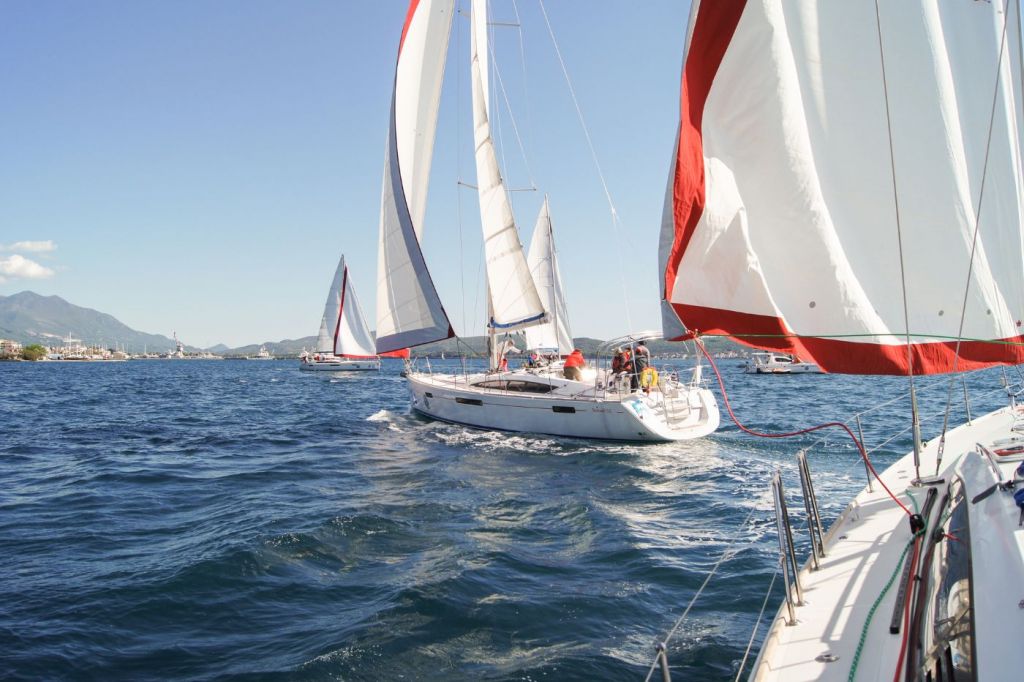
What is "Fast" for Sailboats?
"I feel the need, the need for speed!"
Pete "Maverick" Mitchell in Top Gun
Fast is always relative. If you sail a small dinghy, the eight knots that has you white-knuckled and hiking hard barely pegs the fun-meter on a fifty footer racing sled.
But for "Fastest" there are absolutes. The World Sailing Speed Record council keeps records of various sorts as part of the World Sailing organization. They keep records for straight-line speed (500 meters, nautical mile) and many distance records from races and ocean crossings.
What makes up "fast" is also determined by the type of measurement. A kite surfer will put up amazing speed numbers of a mile but can't cross oceans. Some ocean races only allow certain classes of boats - multihulls are often excluded, and ocean race records are recorded by elapsed time and average speed.
To determine "fast" for our list, we're going to look across categories and pull out the best of the best.
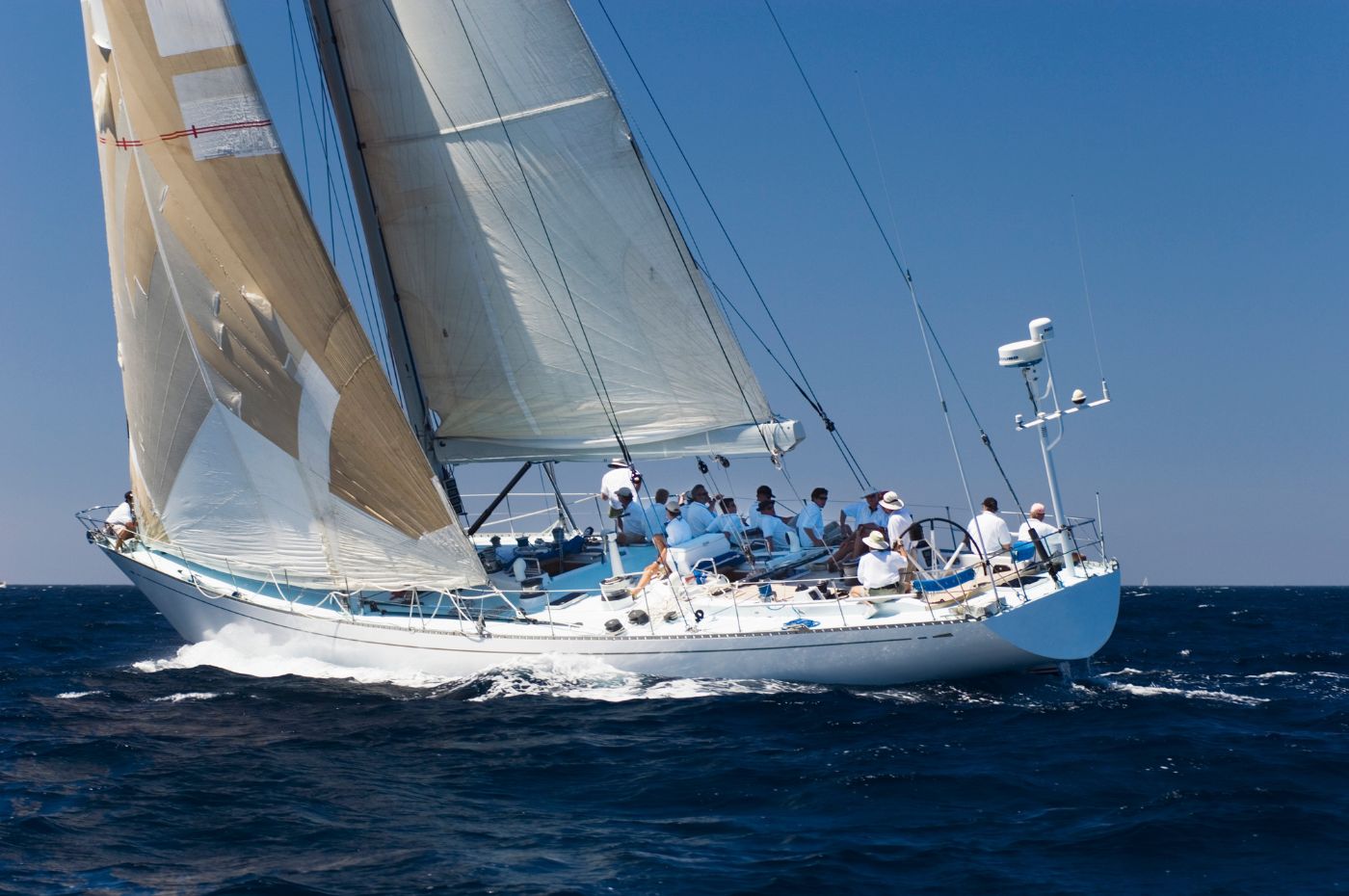
What Makes a Sailboat...Not Fast?
To understand why screaming fast boats are fast, it's important to know what these speedsters need to overcome to break out and sail fast.
Power and Weight
If you apply the same amount of force to two objects with different mass, the lighter object will accelerate and move faster. Throw a light plastic ball with the same force as a steel ball the same size, and the plastic ball will fly faster and farther.
With sailing, in the same conditions with the same driving forces (wind and sail area), the lighter boat will sail faster. If you can reduce weight, you can go faster, and racing sailors can be over the top stripping weight to improve performance. It's not just weight in the hull; weight up the mast can hurt a boat’s performance too.
Using modern building materials like carbon fiber and honeycombed cores cuts major weight from hulls. Couple that with multi-hull or foiling designs which eliminate heavy keels, and you get light, fast boats.
Friction, Drag, and Wetted Surface
Although water doesn't feel it, it's rather sticky. On a molecular level, water adds considerable friction when a hull pushes through the water. High-performance yachts have mirror-polished finishes to eliminate drag, but a slick bottom isn't enough to get the insane performance we're looking for.
Friction between materials is governed by how slippery the two surfaces are and the surface area of contact between them. Imagine dragging a piece of plywood flat across a carpeted floor. There's a lot of contact between a 4' x 8' piece of plywood and the carpet: thirty-two square feet. It will be hard to drag lying flat.
Now lift one end of the plywood and drag it. You've cut the surface area from 32 square feet to a few square inches, and the plywood drags easily. The same concept applies to boat hulls - the less hull you have in contact with the water, the less drag to slow you down.
Displacement hull shapes can affect how much area is in the water and will change as the boat heels.
Multihulls can lift a hull out of the water in the right conditions, cutting drag in half.
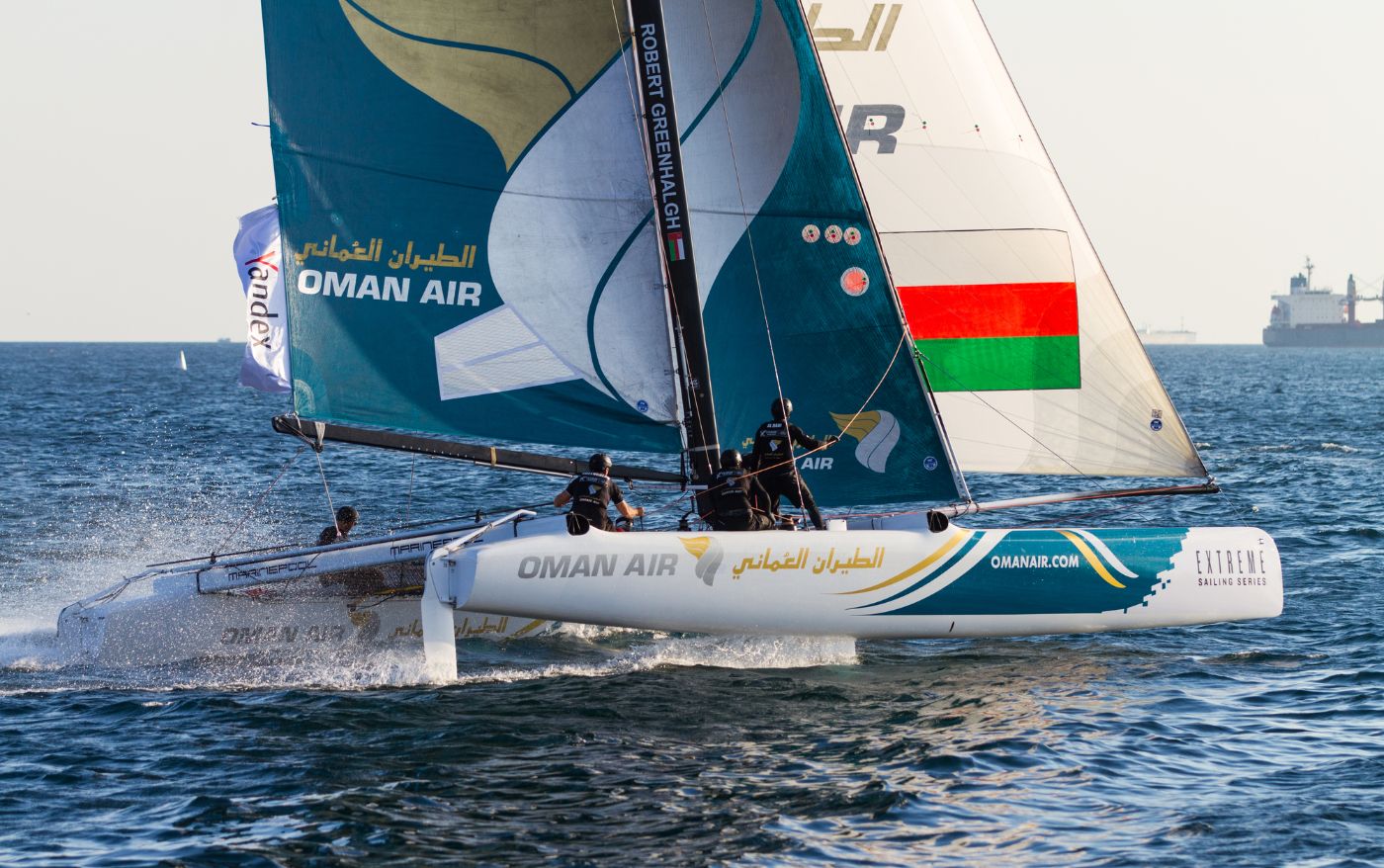
Hydrofoils aren't a new concept, but recent advances in materials science and yacht design have led to major advances in boat speed. Foiling boats lift the entire hull clear of the water, reducing the wetted area to the foils in contact with the water.
Several production boat companies are experimenting with “foil assisted” monohulls - traditionally ballasted boats with foils to lift them partially out of the water to reduce wetted surface drag. Time will tell if the technology works and the market wants it.
In some of the fastest boats, air drag can also be a factor as speeds get over 20 knots. Streamlining of above-water components takes on new importance.
Sail Area and Force
Bigger sails catch more wind, any sailor knows this. And bigger boats have bigger sails, right? But how can you look at the sails and hull together to make the boat faster?
Yacht designers use the Sail Area to Displacement (SA/D) ratio to categorize boats by performance. Displacement is equivalent to the weight of a boat, so the lighter the boat the lower the displacement.
Calculating sail area to displacement
Sail Area to Displacement isn't a straight-line ratio since the impact of displacement isn't linear. It's calculated by dividing the sail area in square feet by the displacement in cubic feet to the 2/3 power.
SA/D ratio = sail area (sq ft) / (displacement in cubic feet)^2/3
To get displacement in cubic feet in seawater, divide the weight of the boat by 64 lbs, the weight of a cubic foot of seawater.
The higher the SA/D ratio, the more powered up the boat. By reducing displacement increases the ratio. Kiteboards and windsurfers take this to the extreme, with very low displacement boards for hulls with large amounts of surface area.
Developments in wing sail technology have also increased high-end performance. Sail performance is more about lift than size, and wing sails generate tremendous lift with a trimmable, reduced airfoil profile.
The SA/D ratio goes out the window once a boat foils, since it's only a rough guideline assuming the hull is in the water. Foiling changes all the math.
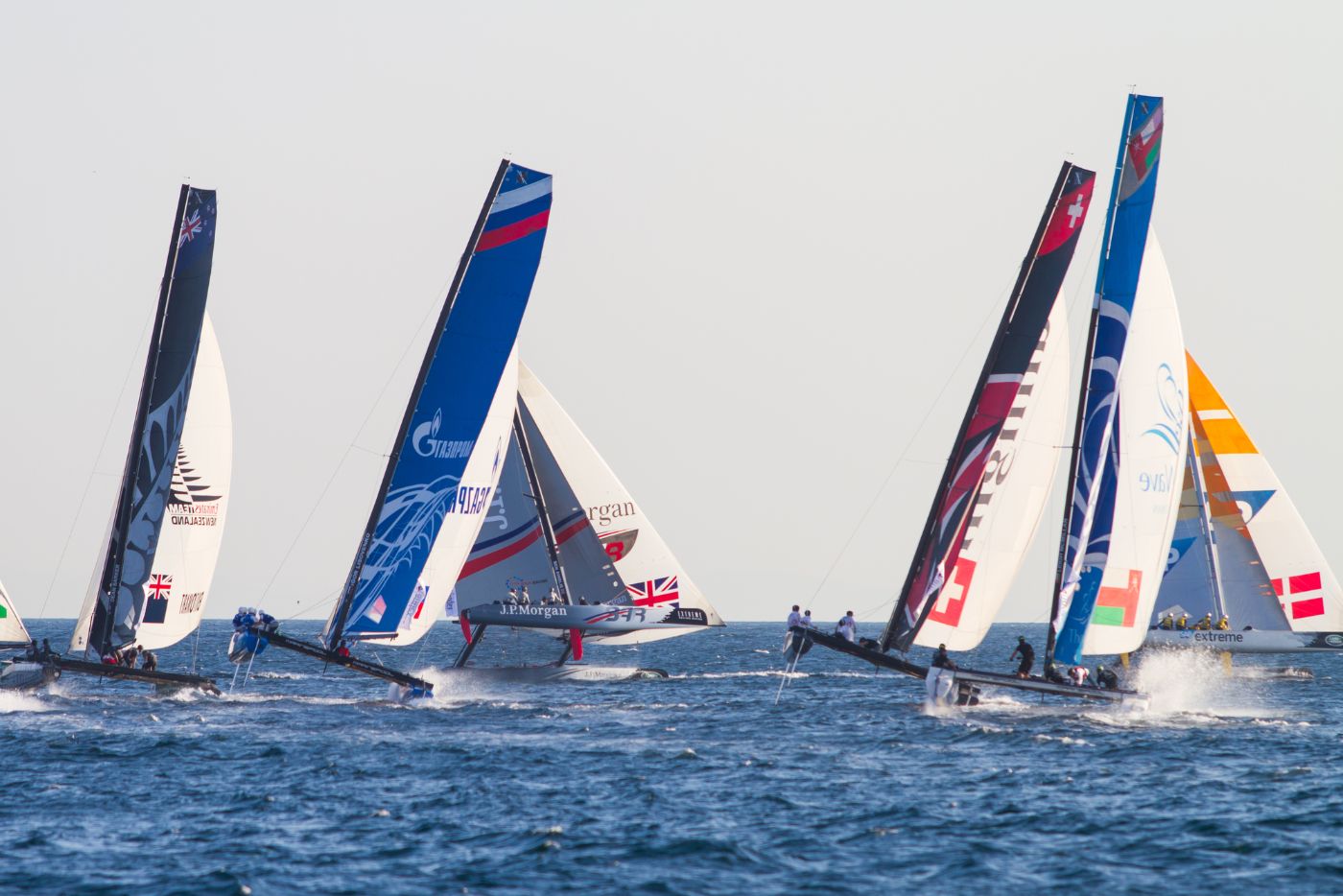
Sailing Faster than the Wind
For centuries, sailing faster than the wind was as inconceivable as flying. Modern boat designs and foiling technology has changed all that. Once a boat moves at an angle towards the wind, its apparent wind - the wind observed on the sailboat - increases. This generates lift, and a lightweight boat with a lot of sail area can generate enough lift to sail faster than the wind.
Apparent wind is how the wind feels on the boat. It's the true wind added to the wind caused by the motion of the boat. The faster the boat moves, the more forward the wind feels.
Add foils, and all bets are off - the current America's Cup is a stunning display of boats sailing many times the speed of the wind.
The physics explaining this (read on kqed.org) are beyond this article; the result is the sails generate lift to accelerate the boats past the true wind speed and the boats sail on their own apparent wind.
The Fastest Types of Sailboats
Very few of the world’s fastest types of boats are commonly available, and most of them are racing focused and seen in those venues. There are some affordable, smaller options, though they take some physical fitness and skill to sail.
Ice boats and land sailers deserve a mention, as they sail on the wind. But they don't float, so we're not putting them with the boats. Water is a lot less sticky when it's frozen, and sailing on blades has gotten speeds over 100 miles per hour. The land speed record for a wheeled land sailer is 126.1 MPH (202.0 KPH).

Specialized Performance Boats
Many of the top sailing speed records have been set by purpose-built boats designed for setting speed records. These are the sailing equivalent of drag racers - purpose designed for speed rather than other competition or use. Two of the best-known are Vestas Sailrocket 2 and Hydroptère.
Hydroptère is a sixty-foot foiling trimaran and set the world speed record in 2009, sustaining 50+ knots over 500 meters and one nautical mile.
Vestas Sailrocket 2 is the current speed record holder over 500 meters with 65.45 knots and holds the nautical mile record with 55.32 knots. Vestas Sailrocket 2 is a trimaran in that she has two hulls (or floats), but the specialized design has a wing sail offset over one while the helmsman sails from a pod on the other hull.
Foiling Multihulls
While the specialty boats are setting records, a variety of foiling multihull boats are raced in sizes from small single-handers up to the AC72's used in the 2013 America's Cup. Boat speeds in the 2013 America's Cup were typically at thirty knots or higher, with speeds hitting 44 knots.
There are many foiling multi classes, including the GC32 and the F50. Even a small foiler like the IFly15 can hit speeds of 25 knots.
Multihulls don't need ballast for stability, so they accelerate to foiling speeds without tipping and stay on the foils with three points of contact usually in the water.
Foiling Monohulls
Foiling dinghies like the Moth woke dinghy sailing up to high foiling speeds. Several single-handed small dinghies are in the market, and sailors have been experimenting with adding foils to existing designs like the Laser and even the Opti to hit double-digit speeds.
Foiling monohulls are trickier than cats since they have only two foils and are less stable. Dinghies use crew weight to keep stability, but larger monohulls have been a problem because of pre-foiling stability without a keel.
The foiling AC75 designs in the 2021 America's Cup solved this with moveable foils, which act as ballast when retracted and foils when in the water. With sophisticated computer feedback systems and skilled sailing, these boats have cracked 50 knots on the racecourse, with in-race speeds in the 30 and 40-knot range when the boats are foiling. These boats can foil in less than ten knots of true wind, hitting speeds three or four times the wind.
Windsurfers & Kiteboards
Drag race speed records are set and broken by windsurfers and kiteboards regularly. The "hull" is a surfboard - a low profile, low displacement hull. Large sail area and low displacement allow speeds over fifty knots in record attempts. Even casual wind and kite surfers sail at high speeds in moderate wind conditions.
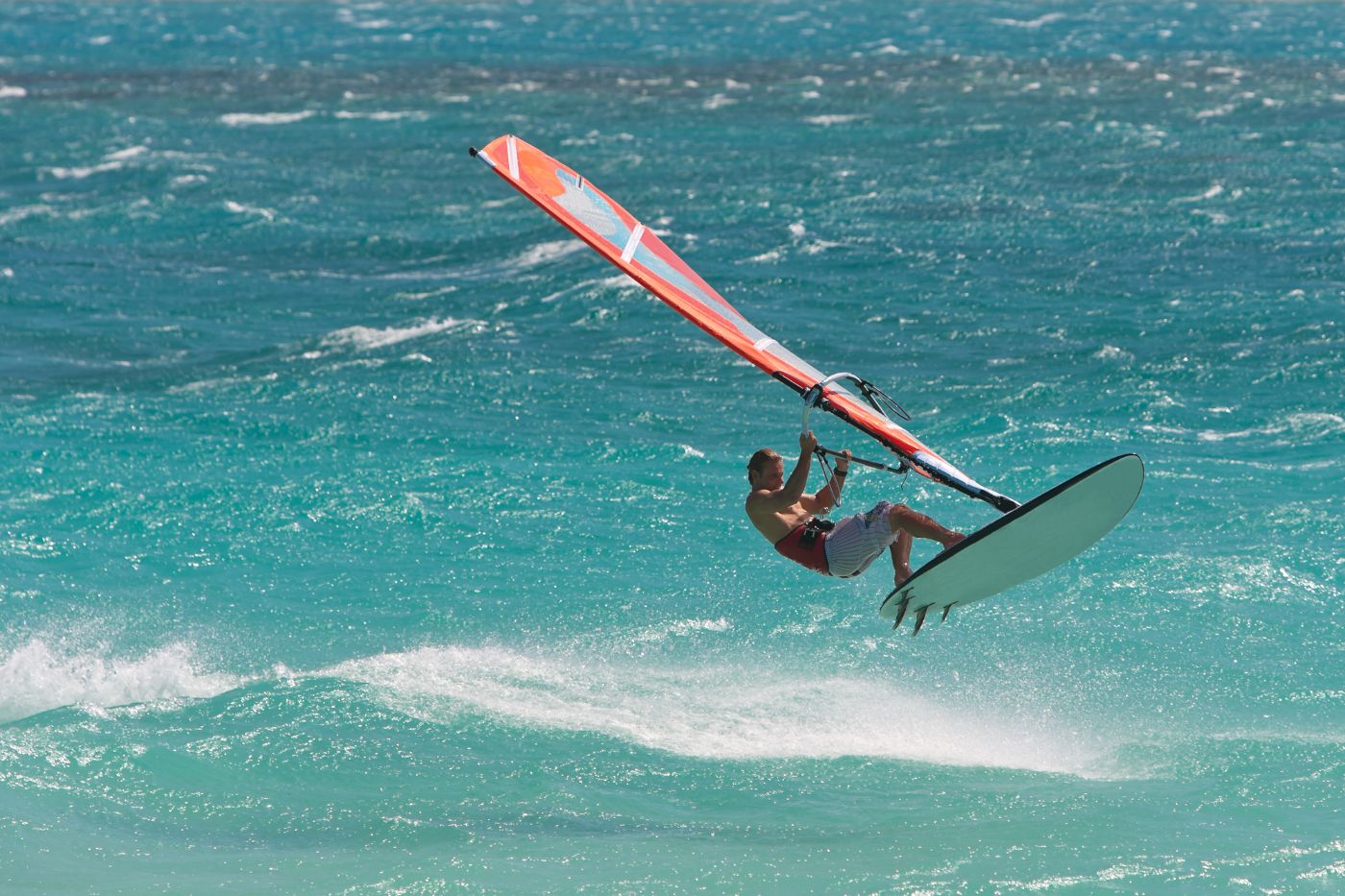
Racing Skiffs
Ultra-light hulls with minimal ballast and massive sail area, racing skiffs ranging from 11 to 18 feet are favorite classes down under in Australia and New Zealand. From single handers to crews of four, these ultrafast boats have been pushing the edge of faster than the wind performance for years, and are still some of the fastest small race boats you'll see on Sydney Harbour.
Sailors pushing the edge have added foils to skiffs (of course...), creating more fast entries in the monohull foiling category.
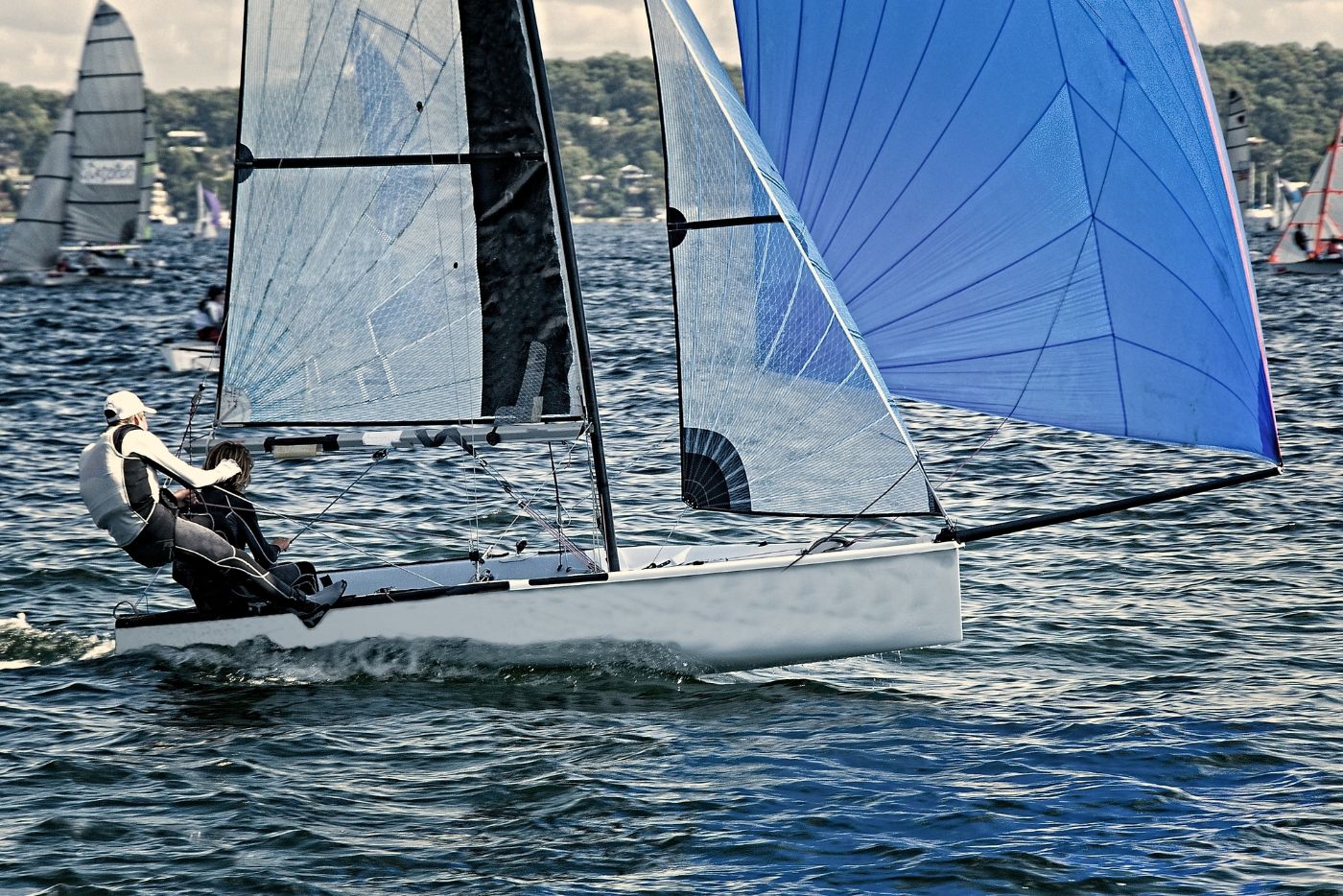
Performance Multihulls
Gunboat and Outremer are two examples of high-performance catamaran brands you can use for something other than racing. These boats use lightweight but tough construction and sleek designs to make bluewater capable cats capable of double-digit sailing speeds in comfort and safety.
They aren't cheap for the average boat owner, but they are fast and comfortable. Cruising at 20 knots isn't a dream.
Offshore Racing Monohulls
Almost all of the records in the big offshore races are still held by the big maxi racing monohulls, and these are still some of the fastest boats in the world. If you follow offshore racing, you’ll know names like Comanche, Wild Oats XI, Rambler, and dozens of others hold line honors records on most of the major ocean races. While specific races like the Volvo Ocean Race or the Vendee Globe don't always make the records books, they sail fast over great distances.

These boats are campaigned by full crews of professional sailors. Design innovations and updates are constant, with new boats built to outpace and outperform. While they don't have the straight-line speeds of the fast foilers and inshore racers, average speeds close to twenty knots over hundreds or thousands of miles of offshore sailing is some serious offshore velocity.
Did you find the answer to your specific question?
👍 7 👎 3
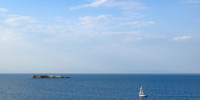
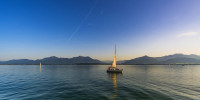
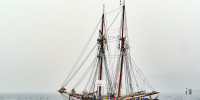

Leave a comment